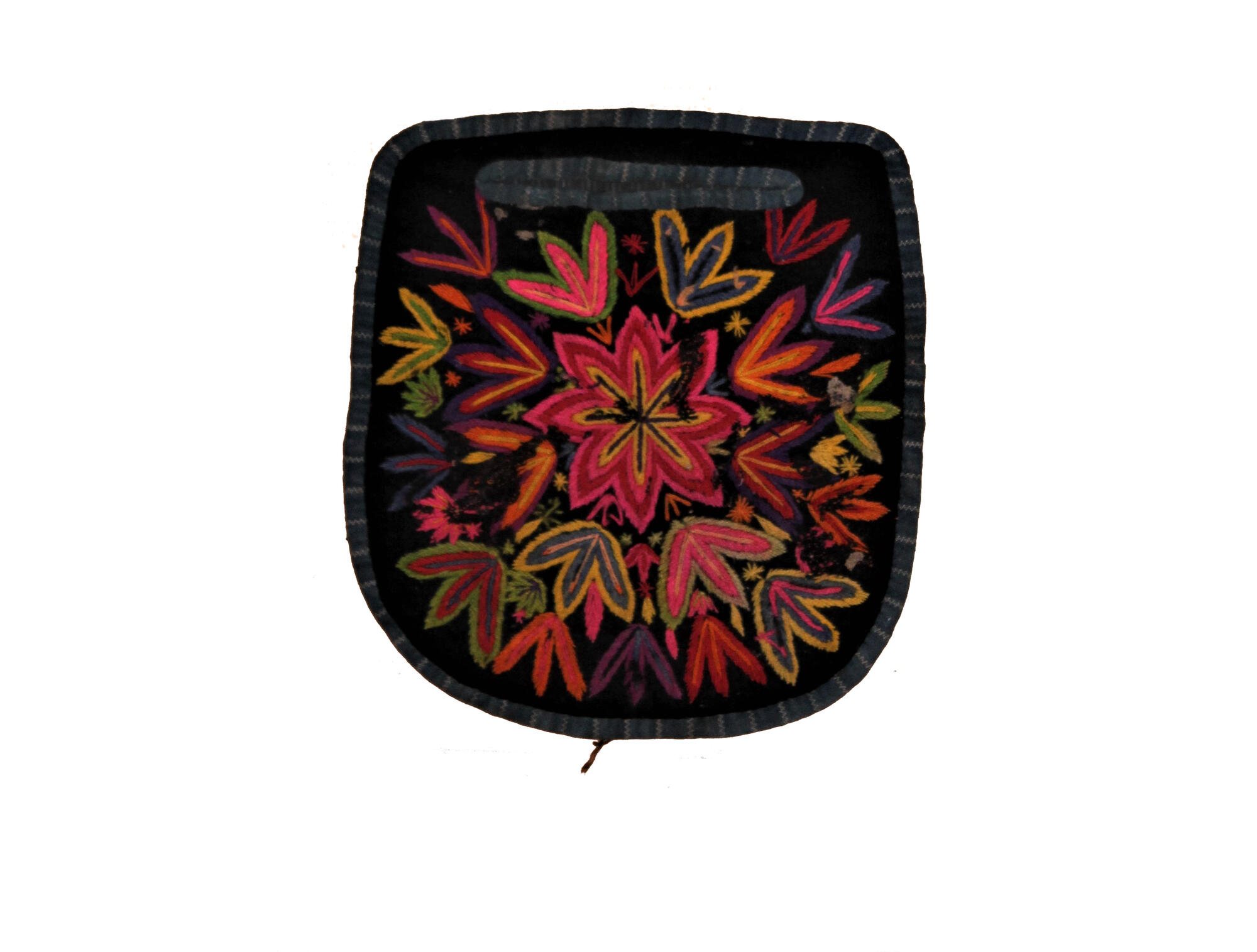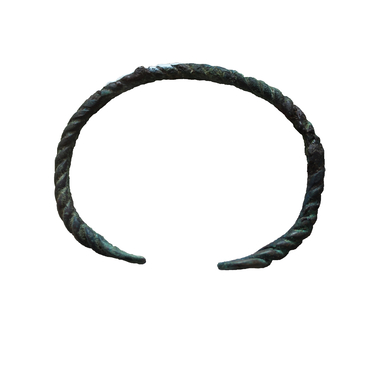There was a time when clothes of Slavic people had no pockets. For example, a Slavic men’s shirt was girded and tugged to form a sort of bag for carrying various items. A belt bag was also used for carrying little items. To pull out a necessary item, you needed to take out all its contents. Quite often would a pocket become an addition to a belt and a suit. Not always it was worn over a shirt, sarafan or skirt. At times, it was worn under them.
Old dictionaries define the Russian word “karman” (pocket) as any bag or satchel attached to clothes on the outside. They started attaching pockets with one side to clothes (men’s only at the time) not so long ago, in the 17th century. Yet women still wore bags under billowy skirts. A pocket was also named ‘lakomka, ’ ‘lakomnik, ’ and ‘karmanka.’ The first two are derived from the Russian word ‘lakomstva’ (sweets), and sweets were what was usually worn inside them.
The pocket was made from two pieces of fabric: the outer part from velvet and the inner from canvas. The belt was sewn on to the back side of the pocket along the upper edge. The piece was decorated with embroidered flower rosettes of various sizes and colours. Woolen or cotton threads were used.
The upper part of the pocket usually had a long horizontal slit, lined with fabric, which served as a trim along the entrance to the pocket. Not only pockets became a decoration of a suit, it also served for carrying a wallet and other small items.
Men would typically buy a leather pocket. It was tied with a leather lace and worn on a neck. Pockets could be purchased at fairs or manufactured manually. Women produced pockets from silk, thin felt, brocade, calico, satin, lined at times. Festive pockets were richly decorated with coloured embroidery from silk and bay yarn, appliques from lovely bright pieces of fabric, beads, ribbons and multi-coloured buttons.
In the VOlga region, a girl would traditionally produce several pockets as gifts to the fiance’s relatives. This custom has survived to this day almost unchanged.
Old dictionaries define the Russian word “karman” (pocket) as any bag or satchel attached to clothes on the outside. They started attaching pockets with one side to clothes (men’s only at the time) not so long ago, in the 17th century. Yet women still wore bags under billowy skirts. A pocket was also named ‘lakomka, ’ ‘lakomnik, ’ and ‘karmanka.’ The first two are derived from the Russian word ‘lakomstva’ (sweets), and sweets were what was usually worn inside them.
The pocket was made from two pieces of fabric: the outer part from velvet and the inner from canvas. The belt was sewn on to the back side of the pocket along the upper edge. The piece was decorated with embroidered flower rosettes of various sizes and colours. Woolen or cotton threads were used.
The upper part of the pocket usually had a long horizontal slit, lined with fabric, which served as a trim along the entrance to the pocket. Not only pockets became a decoration of a suit, it also served for carrying a wallet and other small items.
Men would typically buy a leather pocket. It was tied with a leather lace and worn on a neck. Pockets could be purchased at fairs or manufactured manually. Women produced pockets from silk, thin felt, brocade, calico, satin, lined at times. Festive pockets were richly decorated with coloured embroidery from silk and bay yarn, appliques from lovely bright pieces of fabric, beads, ribbons and multi-coloured buttons.
In the VOlga region, a girl would traditionally produce several pockets as gifts to the fiance’s relatives. This custom has survived to this day almost unchanged.



